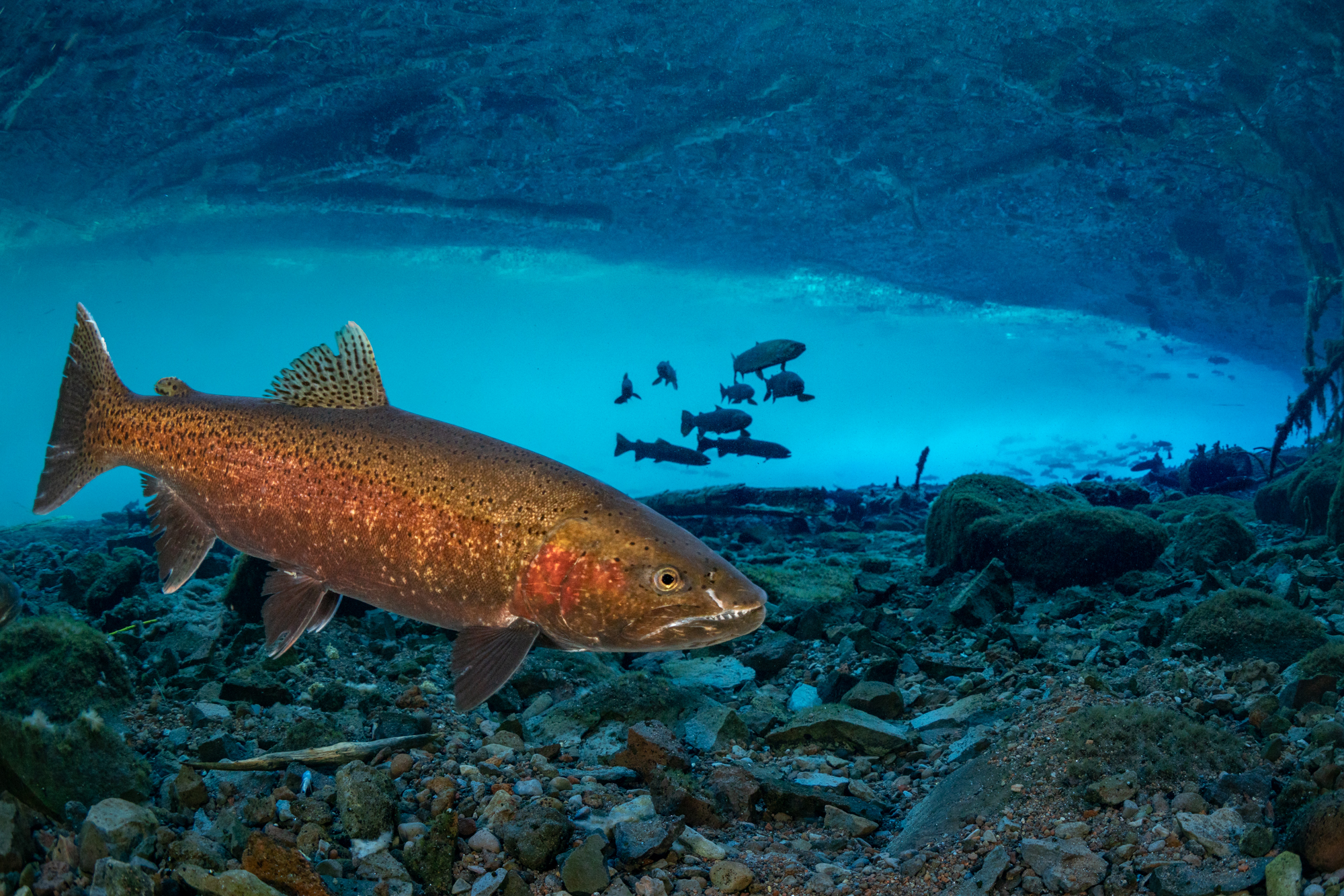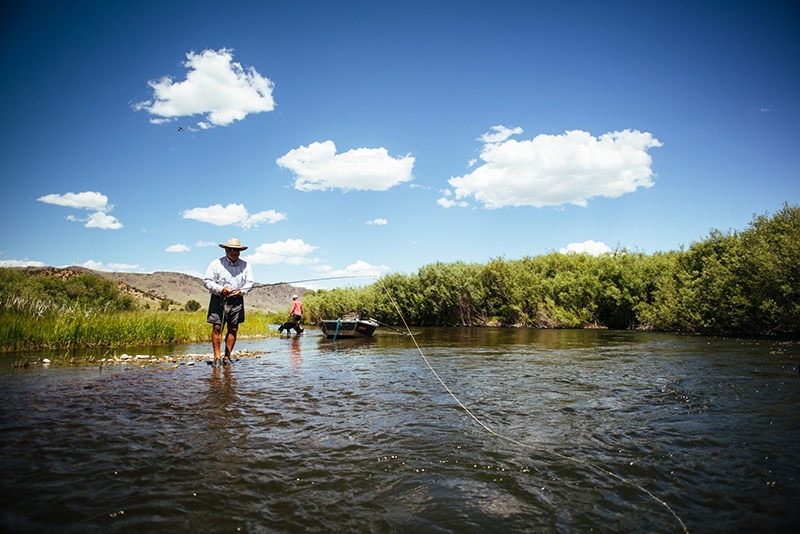
Redband Trout in the Upper Klamath Basin of Oregon are unique creatures. Outside of Alaska, redband trout in the Upper Klamath are the largest-bodied strain of native rainbow trout that remain in freshwater their entire lives. Fish over 24 inches are common and 30-inch trout are caught each year. Trout Unlimited staff from Klamath Falls, Oregon, are assisting with a study led by Oregon State University and Oregon Department of Fish and Wildlife to understand the ecology of these fascinating fish.
Redband trout in this watershed can express an adfluvial life history, indicating that they can use both Upper Klamath Lake and its tributaries to spawn, rear, and migrate. Upper Klamath Lake is the largest freshwater lake in Oregon and provides abundant food resources for native fishes, including redband trout. This productivity allows redband trout to attain a large size. However, the lake is characterized by periods of harmful water quality during the summer months, so it was hypothesized adult redband trout undergo migrations to refuge areas during these periods.
To test this hypothesis, project partners used hook and line sampling to capture 90 adult redband trout from Upper Klamath Lake in the spring of 2016 and 2017. Each fish was tagged with a unique radio tag and released so their movements across time and space could be tracked. As fish were tracked throughout 2016 and 2017, we learned some amazing things and witnessed unique migration patterns. By July in each year, over 80 percent of the fish migrated from the lake to one of three cold-water refuge areas adjacent to the lake. By the middle of August 100 percent of the tagged fish had moved to these refuge areas. These migrations coincided with reduced water quality conditions in the lake, suggesting redband trout can time their movements to avoid harmful conditions. Interestingly, by each October, most fish had returned to the lake and only 5-10 percent of tagged fish remained at these refuge areas.
However, the tagged fish weren’t done moving. During the subsequent winter months, redband trout migrated from the lake to spawning areas in tributaries to the lake. Some fish migrated more than 90 miles to these spawning sites. Furthermore, spawning and refuge areas did not overlap for individual fish, indicating that a fish will use one area for refuge during the summer and a different area for spawning during the winter. Each year, adult redband trout in the Upper Klamath undergo two distinct migrations across a variety of habitats.
The study provided valuable information on the movement of redband trout in the Upper Klamath and identified the importance of cold-water habitats. This information will be used by Trout Unlimited staff in Klamath Falls and other restoration practitioners in the basin to identify and prioritize refuge areas that need to be protected or restored so redband trout can continue to express adfluvial life histories and reach their trophy sizes. The Oregon Department of Fish and Wildlife also used information from this study to change fishing regulations to protect important spawning areas. A second study in the summer of 2019 is scheduled to understand juvenile redband trout habitat use in the same drainage.


